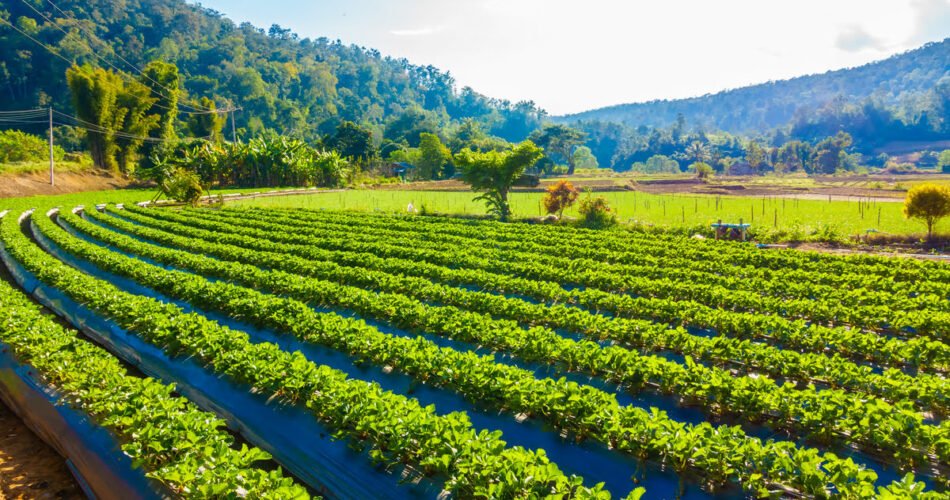Why Does India Need a Second Green Revolution?
The Green Revolution has played a crucial role in India’s agricultural development. It transformed the landscape by significantly increasing food grain production, addressing previous deficits. However, to enhance agricultural exports in today’s globalized world, there is a pressing need to boost agricultural productivity further. Emphasizing crop diversification in a second Green Revolution is essential to compete in the global market. Achieving this requires significant improvements in rural infrastructure, including urban amenities, rural roads, and electrification.
Read More: Suggestions to Improve Agriculture Production and Productivity
Unfortunately, recent growth rates in the agriculture sector have been inadequate, with the annual rate averaging only 2 percent over the last decade. In the Twelfth Plan, the growth rate fell short at 2.1 percent, far below the targeted 4 percent. This sluggish growth has led to a decline in per capita food grain availability, dropping from 510 grams per day in 1999 to 508 grams in 2020-21. Considering the escalating demand and prices of food products, the issue of low agricultural production and productivity demands urgent attention.
Read More: Green Revolution in Indian Agriculture | Meaning, Features, and Effects
Technological advancement is crucial for catalyzing a second green revolution in Indian agriculture. The imperative for such a revolution is underscored by the following realities.
- To meet the Rising Demand for Food Items: India’s population surpasses 1.36 billion, necessitating a second green revolution to meet the growing demand for food. Special measures are required to boost agricultural production and productivity.
- To Ensure Effective Implementation of Food Security: The Food Security Act, of 2013 aims to ensure food grain provision for all. Doubling wheat and rice production is imperative for its successful execution, warranting a green revolution.
- To Increase Production of Nutrition-Rich Crops: Pulses, fruits, and vegetables are vital for nutrition. With rising living standards, there’s a heightened demand for these crops, necessitating their increased production through a second green revolution.
- To Promote Capital Investment in Agriculture: Substantial capital investment is crucial for agricultural sector growth. The second Green Revolution will focus on promoting private and public investment across various agricultural domains, including irrigation, technology, and market infrastructure.
- To Promote Technological Advancement of Agriculture: Technological backwardness hampers agricultural productivity in India. Addressing this requires increased adoption of modern equipment, seeds, and farming techniques. A second green revolution is essential to overcome technological gaps in agriculture.
- To Develop Appropriate Technology for Dry and Low Rainfall Areas: The first Green Revolution primarily targeted well-watered areas, neglecting regions with low rainfall. To ensure nationwide agricultural development, new technology must be developed to combat drought-prone areas. The second revolution will prioritize dry-farming techniques.
- To Promote Agriculture as an Industry: Transforming agriculture into a thriving industry and employment hub is imperative. This entails providing livelihood opportunities for low-income groups and attracting educated individuals to the sector.
Read More about the – Green Revolution In India
Conclusion
In conclusion, the imperative for a second Green Revolution in India is clear and pressing. With a burgeoning population and escalating food demand, bolstering agricultural production and productivity is paramount. The effective implementation of food security measures, coupled with the promotion of nutrient-rich crop cultivation and capital investment in agriculture, underscores the urgency of this revolution. Additionally, advancing agricultural technology, developing solutions for arid regions, and positioning agriculture as a thriving industry and employment generator are critical for sustainable growth. Thus, a second Green Revolution is not just a necessity but an imperative for securing India’s food future and fostering economic prosperity.
FAQ on Need for Second Green Revolution in India
Why Does India Need a Second Green Revolution?
India needs a Second Green Revolution to meet the rising demand for food, ensure effective implementation of food security, increase production of nutritious crops, promote capital investment and technological advancement in agriculture, and address employment issues.
What factors necessitate a Second Green Revolution in India?
The factors necessitating a Second Green Revolution in India include population growth, ensuring effective implementation of food security measures, increasing production of nutritious crops, promoting capital investment in agriculture, advancing technological capabilities, and addressing the needs of dry and low rainfall areas.
How does the population growth in India contribute to the need for a Second Green Revolution?
Population growth in India increases the demand for food products. To meet this rising demand sustainably, India requires a Second Green Revolution to enhance agricultural production and productivity.
How can the Second Green Revolution address the demand for nutritious crops in India?
The Second Green Revolution can address the demand for nutritious crops in India by focusing on increasing the production of pulses, fruits, and vegetables, thereby catering to the evolving dietary preferences of the population.
How can the Second Green Revolution promote agriculture as an industry and address employment issues in India?
The Second Green Revolution can promote agriculture as an industry by encouraging capital investment, technological advancement, and the development of appropriate technology for different regions, thus creating employment opportunities and livelihoods.

